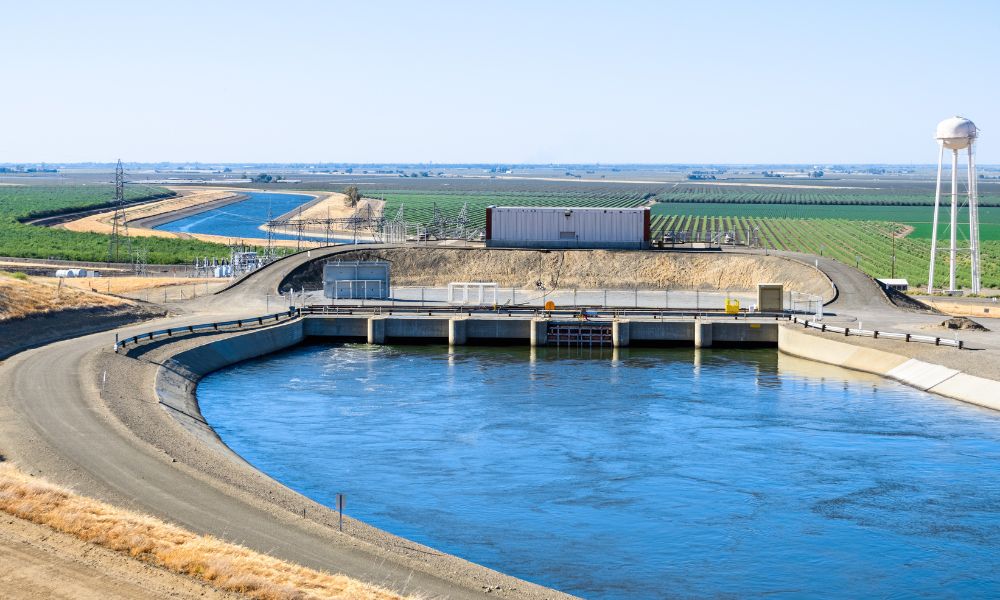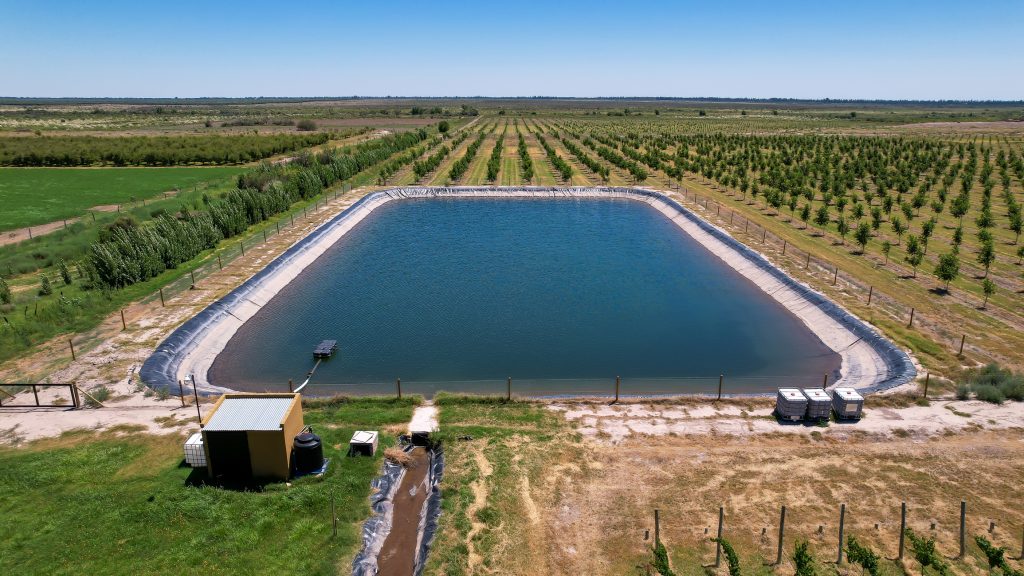Imagine your farm thriving with lush crops and healthy livestock, all thanks to a reliable water source. Building a water reservoir could be the game-changer for your farm, ensuring you have a steady supply even during dry spells.
But where do you start? What do you need to know to make this dream a reality? We’ll break down the essential steps and considerations you need to build an efficient water reservoir on your farm. Whether you’re dealing with unpredictable weather or aiming for sustainable farming, understanding these key elements will empower you to make informed decisions.
Ready to unlock the full potential of your farm? Keep reading to discover how a water reservoir can transform your agricultural success.
Site Selection
Site selection is the most critical step in building a water reservoir for your farm. Choose the right location and you’ll maximize efficiency, minimize costs, and ensure sustainability. But how do you pick the perfect site?
Evaluate Soil And Terrain
Start by assessing the soil quality and terrain of potential sites. Look for areas where the soil is naturally compact and less prone to erosion. This reduces the risk of leaks and structural issues.
Consider the terrain. Flat or gently sloping areas are ideal. They make construction easier and help maintain water levels without expensive adjustments.
Access To Water Source
Ensure your chosen site is close to a reliable water source. This proximity reduces pumping costs and simplifies water transfer. It could be a stream, a river, or even underground water reserves.
Think about seasonal variations. Will your water source dry up in summer? Having a backup plan is crucial for year-round water availability.
Avoid Environmental Hazards
Avoid sites near potential environmental hazards. Steer clear of areas prone to flooding. Flooding can lead to contamination and damage.
Check for pollution risks. Proximity to industrial sites or waste dumps can compromise water quality, affecting your crops and livestock.
Consider Legal And Zoning Issues
Investigate legal and zoning regulations before selecting a site. You don’t want to face fines or legal challenges down the line. Research local laws about water reservoir construction.
Check for land use permits. They can vary by region and may require specific approvals from local authorities.
Think About Future Expansion
Plan for the future. Will your reservoir need to expand as your farm grows? Choose a site with room for potential expansion.
Consider the farm’s overall layout. Ensure the reservoir site fits seamlessly into your existing farm infrastructure for easier access and management.
In building a water reservoir, site selection is not just about the present. It’s about anticipating the future. What will your farm look like in five years? Ten years? Make decisions that align with your long-term vision.
Site selection isn’t just a technical task; it’s a strategic investment in your farm’s future. Have you considered all the factors for your reservoir location? Your choice today shapes your farm’s success tomorrow.

Design Considerations
Designing a water reservoir for your farm requires careful planning. The design impacts efficiency and sustainability. A well-thought-out design enhances water management. It also ensures long-term viability. Let’s explore key design considerations for your farm’s reservoir.
Location And Size
Choosing the right location is crucial. Consider proximity to water sources. Ensure it is accessible for maintenance. Size depends on your water needs. Larger reservoirs store more but require more space. Evaluate your farm’s water usage patterns.
Soil Type
Soil type affects reservoir performance. Clay soil holds water well. Sandy soil may require liners. Conduct a soil test to determine suitability. Understanding soil properties helps in planning construction.
Shape And Depth
Shape influences water circulation. Round shapes promote even distribution. Depth impacts water temperature and evaporation rates. Deeper reservoirs reduce evaporation. Shallow designs might warm water quickly.
Materials And Construction
Select materials based on durability and cost. Concrete and clay are popular choices. Consider using liners for sandy soil. Ensure construction follows safety standards. Proper construction reduces maintenance costs.
Environmental Impact
Consider the environmental impact of your reservoir. Avoid disrupting local wildlife habitats. Implement measures to prevent soil erosion. Use sustainable practices to minimize ecological footprint.
Construction Process
Building a water reservoir for your farm involves several critical stages. Understanding each step helps ensure a successful construction process. Planning carefully and following proper methods guarantees a long-lasting reservoir.
Understanding The Site
The first step involves examining the land carefully. Check the soil type and topography. Select a location that naturally collects water. This minimizes excavation costs and maximizes efficiency.
Designing The Structure
Create a detailed plan for the reservoir. Consider the water needs of your farm. Ensure the design supports adequate water retention. Consult with a professional for best results.
Excavation And Earthworks
Begin the excavation with precision. Use appropriate machinery for the task. Remove all unwanted materials and debris. Ensure the basin is smooth and properly sloped.
Installing The Liner
Lay a durable liner inside the excavated area. This prevents water seepage and ensures long-term integrity. Choose liners suitable for your soil type. Secure the liner carefully around the edges.
Constructing The Dam
Build a sturdy dam to control water flow. Use compacted soil or concrete. Ensure the dam is strong and stable. Incorporate spillways to manage overflow effectively.
Filling And Testing
Fill the reservoir with water gradually. Monitor for leaks or weak spots. Adjust as necessary to ensure stability. Once filled, the reservoir is ready for use.

Maintenance And Management
Maintaining a water reservoir for your farm ensures sustainable water supply. Proper management prevents issues and extends the reservoir’s lifespan. Understanding maintenance tasks and management strategies is crucial for efficiency. Let’s explore essential aspects of maintenance and management.
Inspecting The Reservoir Regularly
Inspect the reservoir monthly for leaks and damage. Check the embankments for erosion signs. Look for any cracks or gaps in the structure. Regular inspections help catch issues early. Early detection saves time and repair costs.
Cleaning And Removing Debris
Clear debris from the water surface weekly. Remove fallen leaves, branches, and other floating materials. Debris can block water flow and contaminate the reservoir. Keeping the reservoir clean ensures better water quality. Clean water supports healthy crops.
Monitoring Water Levels
Monitor water levels daily to avoid overflow or shortage. Use a gauge or sensor to check levels accurately. Adjust inflow or outflow to maintain optimal levels. Proper water management prevents wastage and ensures availability. Consistent water supply is vital for farming needs.
Controlling Algae Growth
Manage algae growth to maintain water quality. Apply safe algaecides or introduce algae-eating fish. Excessive algae can reduce oxygen levels and harm aquatic life. Algae control promotes healthier reservoir conditions. A healthy reservoir supports robust farm operations.
Repairing Structural Damage
Address structural damage immediately to prevent further issues. Hire professionals for significant repairs. Fix minor cracks and erosion promptly. Structural integrity is key to reservoir safety. Well-maintained structures ensure long-term functionality.
Implementing Sustainable Practices
Adopt sustainable practices to enhance reservoir management. Use eco-friendly materials for repairs and upgrades. Encourage biodiversity around the reservoir. Sustainable practices contribute to environmental conservation. They also improve the farm’s overall health.

Conclusion
Building a water reservoir boosts your farm’s productivity and resilience. It helps manage water supply during dry periods. Plan carefully to meet your farm’s specific needs. Consider factors like location, size, and materials. Consult experts for design and construction advice.
Regular maintenance ensures long-term benefits and efficiency. A well-constructed reservoir supports sustainable farming practices. It secures water resources for crops and livestock. Take action today. Secure your farm’s future with a reliable water reservoir.



